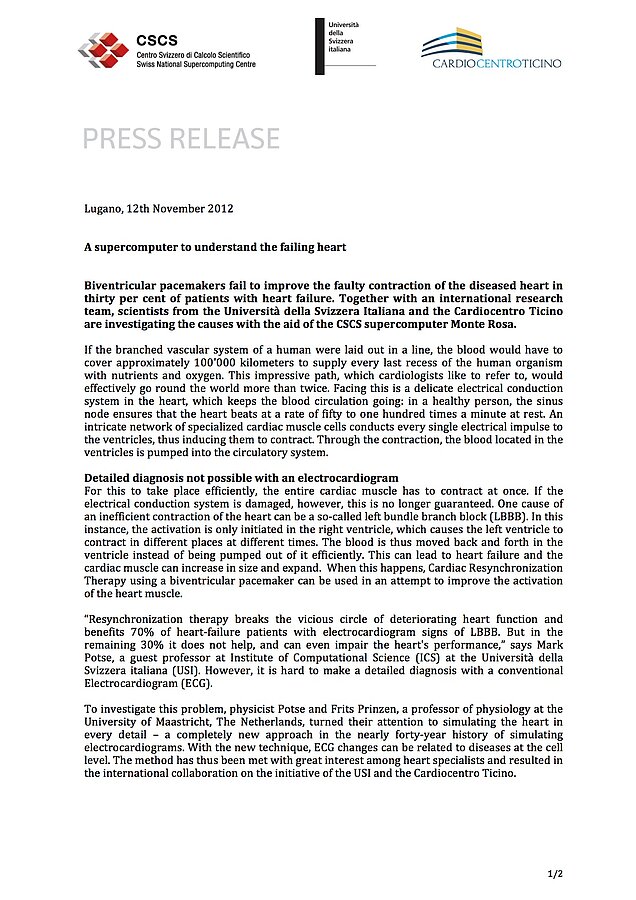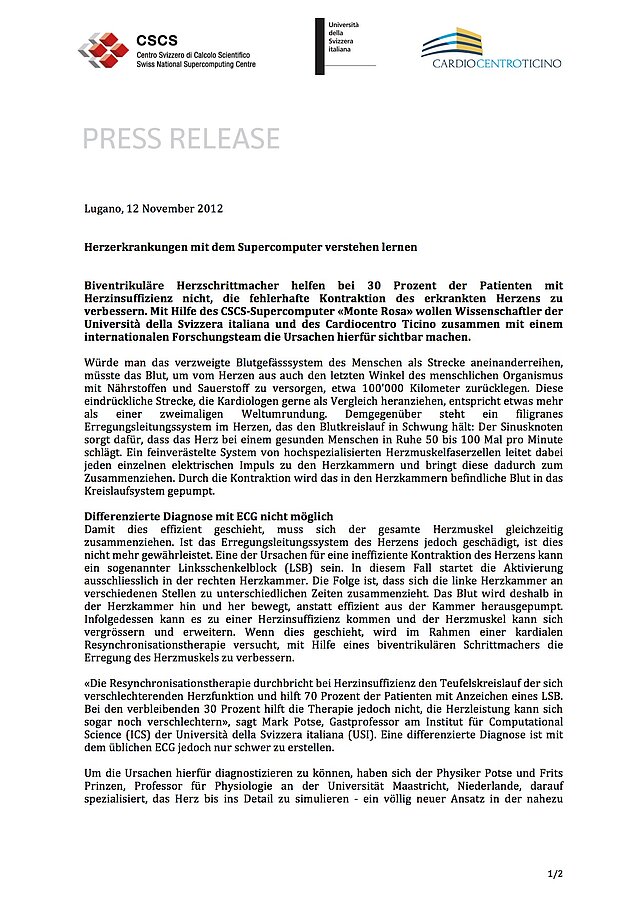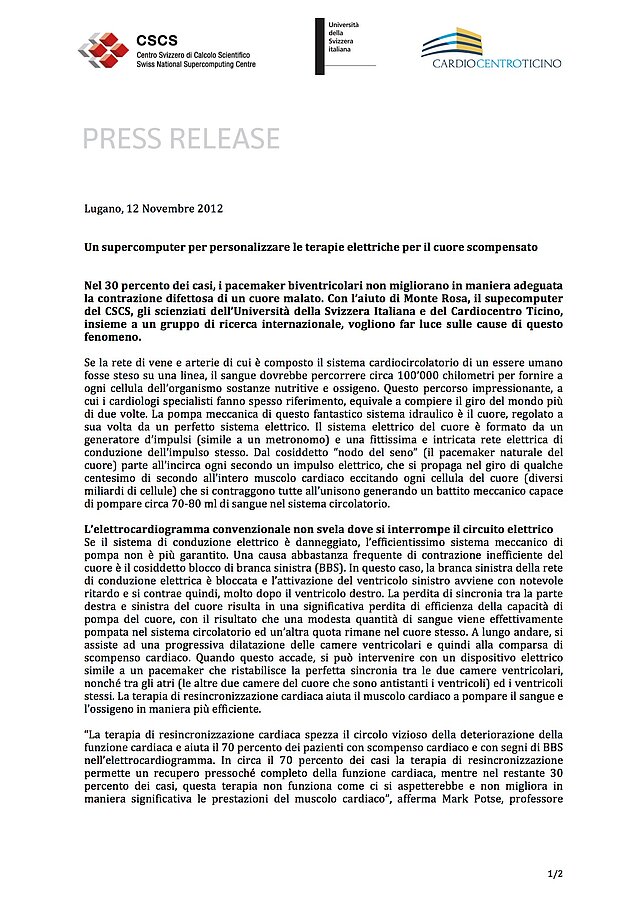Lugano, 12th November 2012
If the branched vascular system of a human were laid out in a line, the blood would have to cover approximately 100'000 kilometers to supply every last recess of the human organism with nutrients and oxygen. This impressive path, which cardiologists like to refer to, would effectively go round the world more than twice. Facing this is a delicate electrical conduction system in the heart, which keeps the blood circulation going: in a healthy person, the sinus node ensures that the heart beats at a rate of fifty to one hundred times a minute at rest. An intricate network of specialized cardiac muscle cells conducts every single electrical impulse to the ventricles, thus inducing them to contract. Through the contraction, the blood located in the ventricles is pumped into the circulatory system.
Detailed diagnosis not possible with an electrocardiogram
For this to take place efficiently, the entire cardiac muscle has to contract at once. If the electrical conduction system is damaged, however, this is no longer guaranteed. One cause of an inefficient contraction of the heart can be a so-called left bundle branch block (LBBB). In this instance, the activation is only initiated in the right ventricle, which causes the left ventricle to contract in different places at different times. The blood is thus moved back and forth in the ventricle instead of being pumped out of it efficiently. This can lead to heart failure and the cardiac muscle can increase in size and expand. When this happens, Cardiac Resynchronization Therapy using a biventricular pacemaker can be used in an attempt to improve the activation of the heart muscle.
“Resynchronization therapy breaks the vicious circle of deteriorating heart function and benefits 70% of heart-failure patients with electrocardiogram signs of LBBB. But in the remaining 30% it does not help, and can even impair the heart's performance,” says Mark Potse, a guest professor at Institute of Computational Science (ICS) at the Università della Svizzera italiana (USI). However, it is hard to make a detailed diagnosis with a conventional Electrocardiogram (ECG).
To investigate this problem, physicist Potse and Frits Prinzen, a professor of physiology at the University of Maastricht, The Netherlands, turned their attention to simulating the heart in every detail – a completely new approach in the nearly forty-year history of simulating electrocardiograms. With the new technique, ECG changes can be related to diseases at the cell level. The method has thus been met with great interest among heart specialists and resulted in the international collaboration on the initiative of the USI and the Cardiocentro Ticino.
Collaboration with Cardiocentro Ticino
“The biggest challenge in the treatment of heart failure using electronic devices is to individualize the delivery of the therapy,” says Angelo Auricchio, Director of the clinical electrophysiology program at Cardiocentro Ticino and President of EHRA (European Hearth Rhythm Association. “The aim of our collaboration with the Institute of Computational Science is to improve the quality of life and survival of our heart failure patients further by modeling which stimulation mode is the most effective in a given patient.” Consequently, the researchers are currently producing individual computer models for twelve patients at the Cardiocentro Ticino based on ECG data and magnetic resonance imaging. They are conducting 100 to 200 simulations for every patient on the CSCS supercomputer Monte Rosa – as many as it takes for the model to produce the signals that are measured in the patients accurately. This enables the scientists to understand which model hypotheses explain the patient’s pathological symptoms.
“Modern simulation methods coupled with supercomputers offer us new insights into physical, or in this case medical, processes,” says Rolf Krause, Director of the ICS. “With the interdisciplinary approach in the computational sciences, mathematicians, computer scientists and physicians can work hand in hand to improve the existing therapies for heart disease and develop new ones in the long run.”
The project is a joint initiative of Mark Potse, a guest professor at the Università della Svizzera italiana; Rolf Krause, Director of the Institute of Computational Science at the Università della Svizzera italiana; Angelo Auricchio, Director of the Clinical Electrophysiology Programme at the Cardiocentro Ticino; and scientists from the Politecnico Milano and Maastricht University. The international collaboration is funded by the “Iniziativa Ticino in Rete”, funded by the Dipartimento dell’educazione, della cultura e dello sport (DECS).


